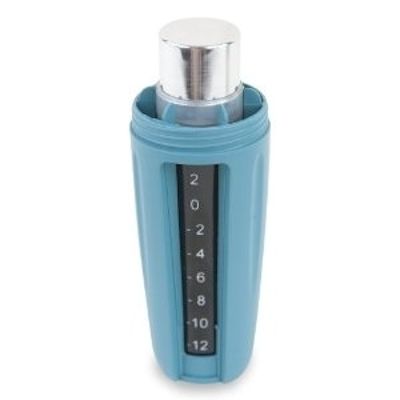WARY OF BOTOX? READ ON….
A significant proportion of my patients are new to Botox, and invariably they have been thinking about seeking treatment for quite some time. The overriding reason given for their hesitation is often anxiety partly of the injections, but more so the thought of looking obvious, or frozen, or downright odd. Given what we have all seen in the media, with overdone, plastic-looking celebrities, these concerns are perfectly understandable. In this blog I shall address these concerns, and explain my approach to ensure that such fears prove unfounded.

Possibly the easiest anxiety to overcome is that of the injections themselves. In this regard, I reassure patients that I always use the finest (ie thinnest) needles, of the highest quality, available. Not only do these needles greatly reduce the risk of bruising, but they also minimise the sensation associated with the injection itself. Many of my clients tell me that their injections feel like a simple scratch, if that. Of course some people do have greater natural sensitivity than others, and so where appropriate I make use of my Coolsense freezing device (pictured below), which has a temporary numbing effect on the injection site prior to the injection itself. Consequently, I am yet to find a patient whose fear of needles or injections has not been overcome. One other benefit of using ultra fine needles is that they are excellent for the technique of micro-Botox (sometimes known as ‘baby Botox’), which I will come to later.

The other major concern I hear is the fear of looking frozen, or different. Quite possibly the most significant factor involved may actually be the personal preferences of the practitioner themselves. On every conference and Masterclass I have been to there have been plenty of fellow attendees with very obvious signs of treatment. It stands to reason that if that is the look they choose for themselves, they are extremely likely to seek to project that look on to their patients. It is my very strong personal preference (and yes, it is reflected in the way I treat myself!) to keep looking natural, and it follows that this is generally my objective when treating patients.
But moving on from the practitioner’s general philosophy, what about the specifics of treatment, and the process itself?
Firstly, I consider it very important for me to know and record a patient’s starting point, before they embark on a course of treatment, which is why I always take photographs on initial assessment, and before each and every subsequent treatment. I know a lot of practitioners don’t see the need for this, largely because of the additional time involved, but I find it incredibly useful to look back and see how patients looked at the start of their regime, and at various points thereafter. I believe that this is an essential discipline if one is to ensure that a person’s natural essence (in other words, what makes them themselves) is retained. I also believe it is best practice to continuously reassess a treatment program, rather than just routinely repeating a previous treatment.
Of course, it goes without saying that a practitioner’s injection technique, and also their experience, are crucial to the end result for a patient. The anatomy of the face is complex, with a myriad of muscles, blood vessels and bones to learn, understand and master. If a practitioner does not have ample training, experience, and knowledge to be able to inject the right amount of Botox, into precisely the correct muscle, to the correct depth, then unwanted effects can occur. For example, the muscles in the forehead act in such a way as to lift the skin and soft tissues above the eyes, including the eyebrows. If an inexperienced or undertrained practitioner injects too low into this muscle group, or injects too high a dose, then the muscles supporting the eyebrows can be weakened, resulting in drooping of the eyebrow.

The quantity of Botox injected furthermore has an important role to play in maintaining a more natural look. The classic frozen face, no movement result is inevitably the consequence of large doses of Botox being applied. To avoid this, I always start off a treatment regime with conservative doses, even on occasions micro-dosages, with a view to allowing some movement to remain. Whilst adopting a cautious approach means that patients can initially be under-treated, I invite all patients back for a free top up between two and four weeks post-treatment. It is common sense that if you under-treat, you can always top up the dose, but if you over-treat there’s nothing you can do other than wait for the effects to wear off.
Finally, there is the matter of frequency of treatment to consider. I know some clinics routinely book clients in for twelve weekly treatments, irrespective of whether or not re-treatment is actually necessary or appropriate at that stage. In contrast, I generally encourage patients to go as long as possible between treatments, to allow the effects of one treatment to nearly wear off before undergoing the next.
So there we have it there is no magic answer for Botox treatment, and don’t believe anyone who tells you that a one size fits all approach works. Every patient is different, with different facial muscular activity, and every patient deserves a bespoke regime, which develops and evolves over time. And with the right regime, from a practitioner with the right approach and skill set, it is perfectly possible to get all of the benefits Botox can offer, without morphing into someone completely different!

Arrange your FREE, no-obligation consultation…
If you are interested in our services and would like to know more, simply contact our admin team on 0161 928 2210 to arrange your free, no-obligation consultation. Alternatively, complete the contact form below, and we’ll get back to you as soon as we can.
